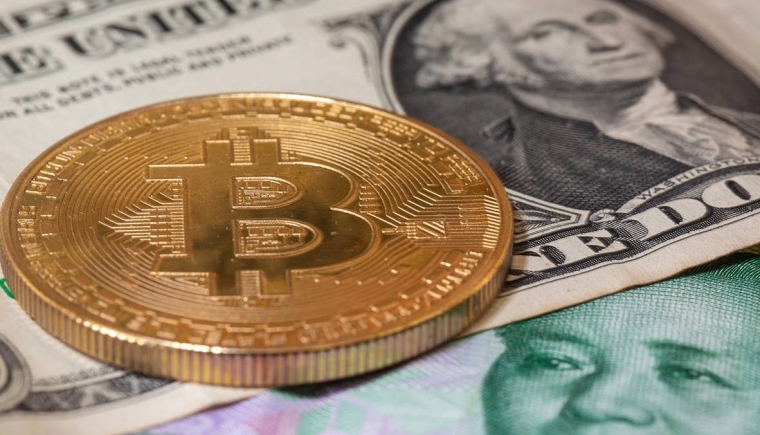
By Nouriel Roubini and Brunello Rosa
What does the future hold for money and payment systems? While it will surely feature unprecedented technologies, foreseeing the full picture requires historical context.
Traditionally, money and payment systems have run on a combination of base money (issued by a central bank) and private-sector money, typically issued by commercial banks through demand deposits, credit cards, and so forth. Since newer fintech payment systems such as Alipay, WeChat, Venmo, or PayPal are still linked to bank deposits and credit cards, they represent evolution, not revolution.
As for Bitcoin and other decentralised crypto assets, none has become a currency because none is a unit of account, scalable means of payment, stable store of value, or numeraire (a benchmark for other similar assets). El Salvador went so far as to declare Bitcoin legal tender, but, at best, some 5% of transactions for goods and services are settled with it.
True, with the Trump administration creating a Strategic Bitcoin Reserve, and with more institutional investors adding it to their portfolios, some commentators believe that Bitcoin will become a store of value over time. But this has yet to be tested.
What other possibilities do distributed-ledger technologies (DLTs) create? Leaving aside crypto assets, which will remain volatile tokens for speculative activities, three other options have emerged: central bank digital currencies (CBDCs), stablecoins, and tokenised deposits.
Fears that CBDCs would disintermediate banks or facilitate bank runs in times of financial panic have diminished now that limits are likely to be imposed on CBDC balances. In most cases, central banks will aim only to provide a public safe asset for people’s digital wallets, rather than an alternative to private-sector payment systems; and most CBDCs will not be “programmable” or interest yielding.
That means private-sector solutions will continue to dominate payments. Fintech can offer cheap, safe, and efficient options that are not necessarily based on DLT; and now governments are offering real-time payment rails for banks and corporate firms that facilitate cheap and immediate settlement. And even in the DLT domain, the tokenisation of money-market funds or interest-bearing “flatcoins” (pegged to a basket of assets) may drive adoption of new forms of quasi or broad money that can be seamlessly converted into digital moneys that provide payment services.
But preferences differ markedly across jurisdictions. In the United States, the Trump administration’s ideological opposition to CBDCs has led it to favor stablecoins (prompting warnings from the Bank for International Settlements (BIS) of a return to the shambolic free banking of the nineteenth century, only in a digital format). In Europe, by contrast, worries about stablecoin risks – such as a new doom loop between the treasury and stablecoin issuers, and poor anti-money laundering and “know your customer” practices – imply a preference for CBDCs and tokenised deposits. And in China, an aversion to potentially decentralised stablecoins has led the government to favor a CBDC, plus fintech payment solutions.
Ideally, each of these solutions would co-exist and play a different role within a well-organised system of digital currencies. A CBDC would be the public safe asset in people’s digital wallets, providing a foundation of trust for the entire system. Stablecoins would then be used for domestic peer-to-peer or international payments, and tokenised deposits would be used for inter-bank transactions.
So far, one of the only jurisdictions that seems to have recognised the importance of implementing this “pyramid” of digital currencies is the United Arab Emirates, which is creating the most welcoming environment for digital assets at the global level. In this context, it bears mentioning that while new digital forms of money are based on some form of DLT, most run on centralised rather than decentralised ledgers, and they tend to be permissioned by authorised and trusted validators, rather than through permissionless and trustless transactions. Or put another way, they are closer to traditional centralised ledgers than to a true DLT.
Still, many of those tokenising real-world assets do seem to be opting for DLT as the preferred “unifying platform,” with digital assets being denominated in native-digital currencies. Thus, rather than focusing on the race for dominance over domestic or cross-border payment systems, we suggest watching the geopolitics of digital currencies, given their potential to serve as global reserve assets.
Seeking a greater global role for the renminbi, in part to mitigate the risk of future US financial sanctions, China is pushing for its CBDC, the e-CNY, to be used in cross-border transactions among countries involved in China’s Belt and Road Initiative (and its sister project, the Digital Silk Road). With m-Bridge, a technology originally designed with the BIS, the e-CNY could be used to bypass dollar channels and the SWIFT system for cross-border transactions; in fact, China already has its own alternative to SWIFT: CIPS (Cross-border Interbank Payment System).
These moves suggest that the eurozone could be squeezed between a still-dominant dollar (whose role would be boosted by the widespread adoption of dollar-pegged stablecoins) and a rising e-CNY. Europe is therefore moving fast to introduce a digital euro, which could help maintain the single currency’s global reserve role and grant some “strategic autonomy” to the European Union.
Finally, the Trump administration is pushing stablecoins (through the recent GENIUS Act) to preserve the dollar’s dominant role in global payments and as a reserve currency. With dollar-based stablecoins now re-dollarising the global economy, both China and the eurozone are re-considering their earlier skepticism and contemplating issuing their own stablecoins.
The future of money and payment systems will be characterised by evolution, not some radical crypto revolution. Network effects give current systems an incumbency advantage. Over a decade and a half after Bitcoin’s launch, the main advance in crypto is the stablecoin, which is just a digital version of fiat currency; and even the adoption of stablecoins will be gradual. Money is too much a public good and too much a national-security concern to be left to private, anonymous, decentralised actors. One way or another, it will remain within the state’s purview.
*Nouriel Roubini, Professor Emeritus of Economics at New York University’s Stern School of Business, is Chief Economist at Atlas Capital Team and the author of Megathreats: Ten Dangerous Trends That Imperil Our Future, and How to Survive Them (Little, Brown and Company, 2022). Brunello Rosa is CEO of Rosa & Roubini and the co-author (with Casey Larsen) of Smart Money: How Digital Currencies Will Shape the New World Order (Bloomsbury Publishing, 2024). Copyright: Project Syndicate, 2025, published here with permission.
9 Comments
A public good in economic terms is both non-excludable and non-rivalrous.
Money is clearly neither of these things. People can easily be excluded from it, and consumption by one excludes others.
It's important for society and lots of other things, but it's not a "public good". It's unusual that a Professor Emeritus of Economics would get this so wrong. Or maybe he has no real arguments so has resulted to sophistry in the hope that plebs won't understand.
Roubini has a pretty bad track record when it comes to crypto. But I do agree that Bitcoin will never be a transactional currency, a fixed supply system just wouldn’t work. Other cryptos could, but it seems like a solution to a problem that doesn’t exist. The current fiat systems works well for transactions.
It seems like crypto has become an alternative to gold. I’m the first to admit I thought it would all be worthless now and I was wrong, Bitcoin at least is now entrenched as a financial asset, and as it becomes more and more widespread its value can only increase. Probably the biggest threat is if someone hacks it.
Dr Doom launched a cryptocurrency project called the Atlas Climate Token (ACT) through his firm Atlas Capital in late 2023. The project was intended to create a stablecoin backed by a basket of real-world assets, with an emphasis on inflation-protected instruments, commodities, and climate-resilient assets. The aim was for ACT to act as a stable store of value and, eventually, an accessible payment tool for vulnerable communities. He positioned ACT as a solution to inflation and global instability.
Roubini’s project, while novel in narrative, has received criticism for closely resembling previous failed stablecoins and for relying heavily on marketing buzzwords similar to those used during previous crypto boom-and-bust cycles. It has been characterized by critics as more akin to traditional stablecoins like Tether rather than a true innovation or competitor to the ol' rat poison.
When thinking about money, let's not forget that a core property of money is as a store of value.
"The Debasement Trade" since Covid in early 2021:
In USD: Nasdaq (NDX) up 165%, SPX up 102%, U.S. home prices up 56%
In Gold: Nasdaq (NDX) up 7%, SPX down 18%, U.S. home prices down 37%
In Rat Poison: Nasdaq (NDX) down 78%, SPX down 84%, U.S. home prices down 87%
Stablecoins are a fantastic evolution but it's also hard to argue that BTC is also not important in its own right. The fact that it's cumbersome to buy a cup of coffee with it is beside the point.
I don’t agree that a store of value is a core property - not in the long term at least. In fact the RBNZ is mandated to make fiat lose 2% of its value each year.
Obviously currency has to be stable enough that you don’t feel you need to spend your paycheck ASAP, but there is no need for people to store money for a long period, they should invest instead.
Treasury Department proposes Trump coin to mark 250th anniversary of US
https://www.stuff.co.nz/world-news/360844061/treasury-department-propos…
Collector's item. Irrelevant in the greater scheme of things.
Greed is a derogatory term for profit maximizing, which all people engage in, including the control of money. For ex, with money, we see disparities between currencies. This is due rather to inefficiencies, sometimes caused by the market, but usually caused by regulatory barriers. It's illegal for an app developer to offer frictionless forex trading on a mobile device, in which funds can be instantly paid also from the phone to any vendor.
People don't have control because of regulation. Cryptocurrencies solve these kind of problems because tech, at its best, obviates control.
We’re weeks away from the 17 year anniversary of the Bitcoin white paper; nine pages that changed the world. After all these years of Bitcoin succeeding as money (store of value, medium of exchange, and increasingly unit of account) not one article here has managed to describe it honestly. Maybe start by reading the source.
Satoshi summed it all up very nicely a few months later when version 1 was released: "The root problem with conventional currency is all the trust that's required to make it work. The central bank must be trusted not to debase the currency, but the history of fiat currencies is full of breaches of that trust. Banks must be trusted to hold our money and transfer it electronically, but they lend it out in waves of credit bubbles with barely a fraction in reserve. We have to trust them with our privacy, trust them not to let identity thieves drain our accounts. Their massive overhead costs make micropayments impossible."

We welcome your comments below. If you are not already registered, please register to comment.
Remember we welcome robust, respectful and insightful debate. We don't welcome abusive or defamatory comments and will de-register those repeatedly making such comments. Our current comment policy is here.